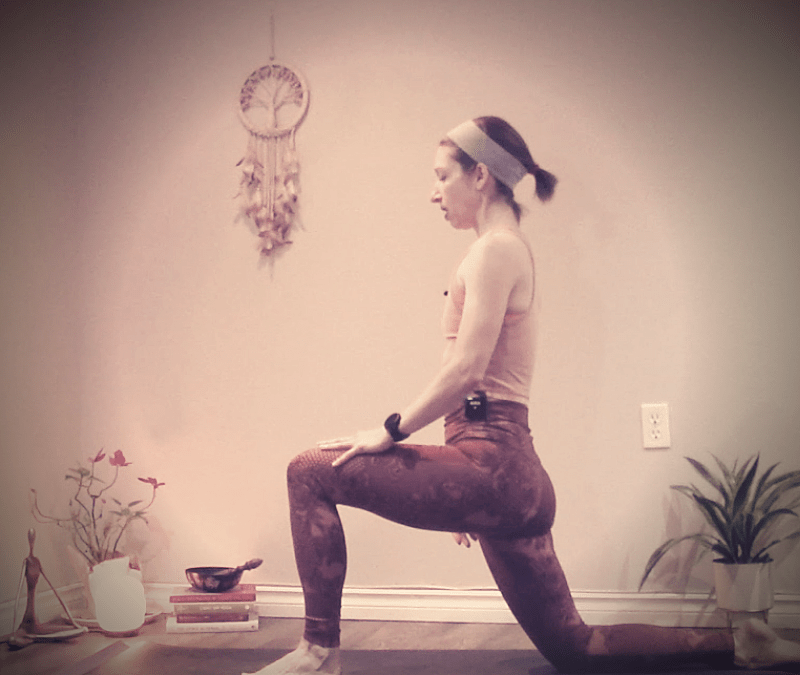Target multiple areas with this variation of yoga’s low lunge
The physical benefits of yoga have shown up in a big way for me in my ability to stay active in other sports. Like running. I have always enjoyed the meditative quality of a solo run. This form of exercise always gets me out of my head and it provides the vigorous workout for my heart that yoga simply can’t, even with jump backs to Chaturanga.
But I’ve often pursued running at the exclusion of other activities, lacking balance, and then had forced timeouts by muscle soreness or worse injuries. As I’ve grown in my yoga practice and incorporated yoga consistently, I am better able to keep on striding.
With deeper training and understanding of anatomy, I can call on specific yoga poses or variations of these regularly in my practice to support cross-training and run recovery. By far my favourite stretch to support my body’s ability to run well is the low lunge (Anjaneyasana in Sanskrit). This pose provides a stretch to many of the typical trouble spots that can lead to knee or back pain.
Often the source of pain can be traced to tightness and/or weakness in the muscles that flex the hips. Tight because we sit … a lot, so these muscles are always in a flexed or shortened position. Weak because we sit … a lot and sitting doesn’t require the muscles that flex the hips to do anything to flex them. Our chairs and sofas do the work for us by combatting gravity and supporting us to maintain this flexion for hours at a time. Then we add running into the mix, which asks us to continuously lift our leg by flexing the hip and then stretch those flexors as we take the leg behind us to push off, and it’s no wonder that it can feel unpleasant.
The low lunge stretches the quadriceps and iliopsoas. I like to bring greater activation to these areas with the following variations to the typical lunge.
- Rather than sit the hips as far forward and low as they will go, relaxing my weight down into the lunge, I pull back. By engaging the lower abdominal muscles to pull my ribs away from my front thigh and slightly tucking my tailbone, I’m stretching those hip flexors in an active state, which helps strengthen as well.
- I incorporate a side bend to extend and really target the psoas by lifting the arm on the same side as my back leg, reaching up and over to the opposite side.
Some other tips for getting the most out of this pose? Press your back foot down into the mat, as this will distribute the weight between more muscles protecting your knee. If needed, pad under the back knee by folding your mat, using a blanket or other prop. If your knee doesn’t like being down at all, lift it but try to keep a bend in the back leg and the knee hovering off the ground – in fact, this is a great variation on the pose that will work your quads even more!
Now this is meant to be done after your run, when your muscles are warm. I also incorporate this version of the low lunge into full yoga sequences with other dynamic movements to strengthen and stretch the hip flexors. Whether you run or not, our lifestyle of sitting really does a number on our hips. Giving them some work will help.
Want more tips for runners? Subscribe here and get my 5 Yoga Poses for Runners download!
